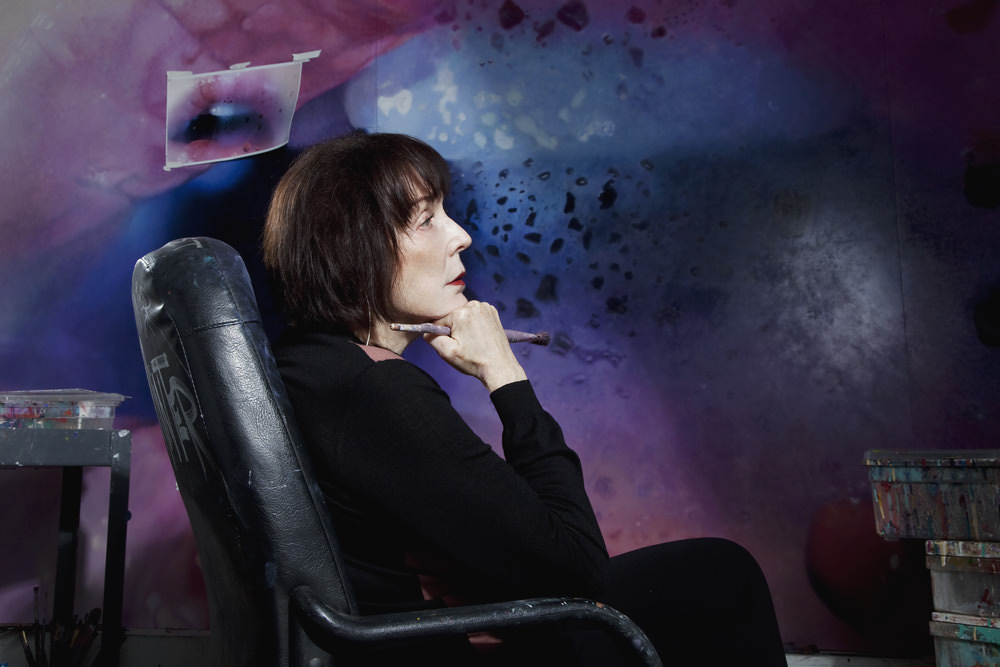She’s a valiant artist, a rigorous thinker, and a paragon of activism for women. Marilyn Minter is in the hot seat, and she isn’t backing down. That’s why, when we met with her last year at Planned Parenthood’s annual “Women of Valor” spring luncheon at The Pierre hotel, she was being honored for her advocacy for women’s justice and reproductive rights. There, she bravely shared her story of relying on the center for healthcare and contraception, receiving a safe abortion from the clinic during her young adulthood, leading her to become closely tied with the center and its missions, later raising millions of dollars for its efforts. That afternoon, Minter also presented new work and initiatives for Planned Parenthood—Miley, a photograph of Miley Cyrus in a steamy shower, limited to 50 signed C-prints, face-mounted on UV Plexiglas. The initiative stemmed to later include Miley Loves Planned Parenthood and Pro-Choice Miley—two photographs from the session, only available on T-shirts made by Marc Jacobs. All proceeds went to the organization.
Not long afterward, around the time that her retrospective “Pretty/Dirty” at the Brooklyn Museum was announced (on view through May 7), and her solo show at Salon 94 (October 27-December 22, 2016) as well, we met with Minter at her studio, before reconnecting after the election. A swanky jazz doorbell alerted her to our presence at the sturdy doors to her studio, and the artist greeted us in a Depeche Mode T-shirt and Chuck Taylors, in front of a few large-scale paintings, some Pretty/Dirty books printed for the occasion of her solo show, and bowls of pins made for Planned Parenthood that read “Don’t Fuck With Me, Don’t Fuck Without Me.”
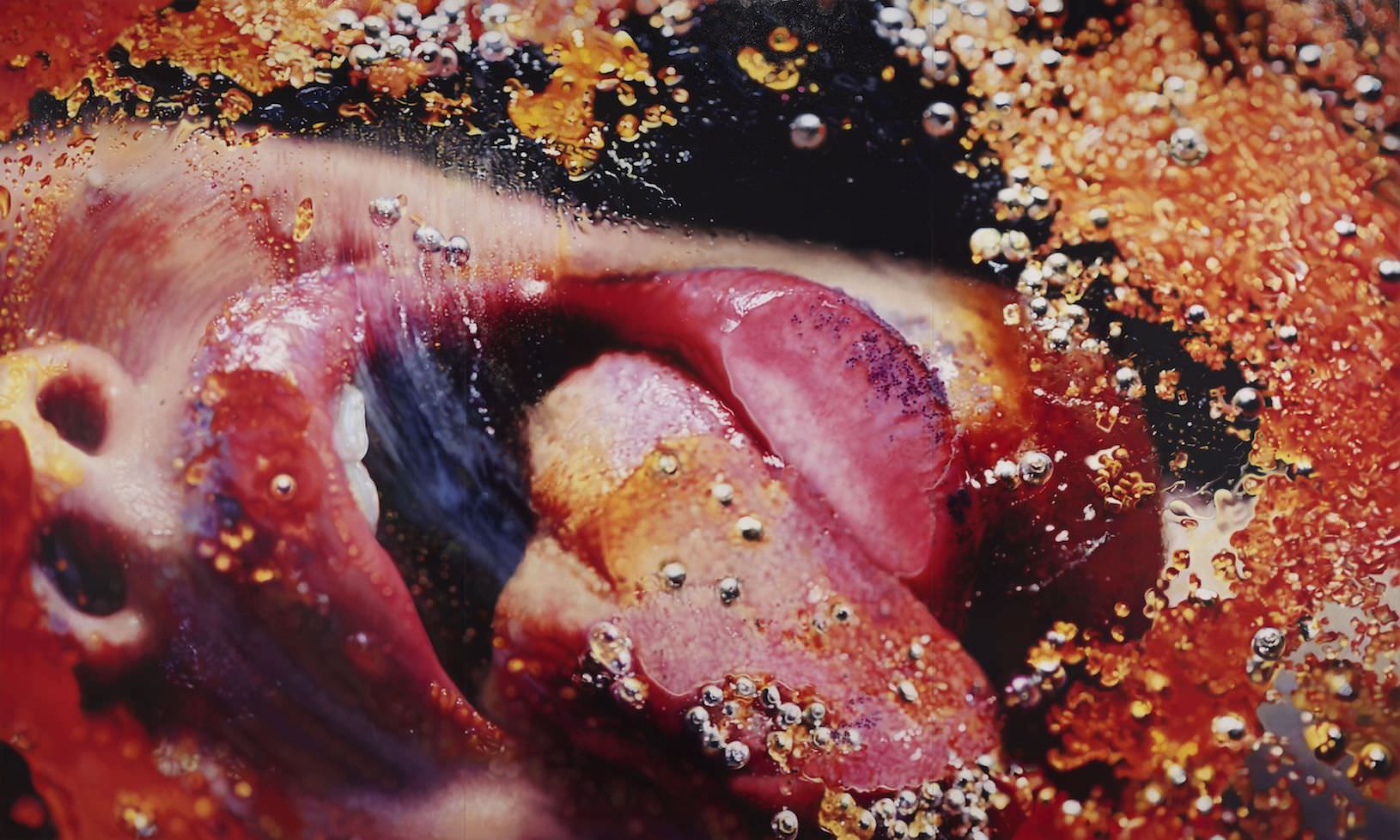
Marilyn Minter (American, b. 1948).
Orange Crush, 2009.
Enamel on metal, 108 x 180 in. (274.3 x 457.2 cm).
Private collection.
Courtesy of the Brooklyn Museum.
Minter spoke with Whitewall about her activism, her iconic art as it relates to glamour and sex, and how the two intertwine.
WHITEWALL: When did your support for Planned Parenthood begin?
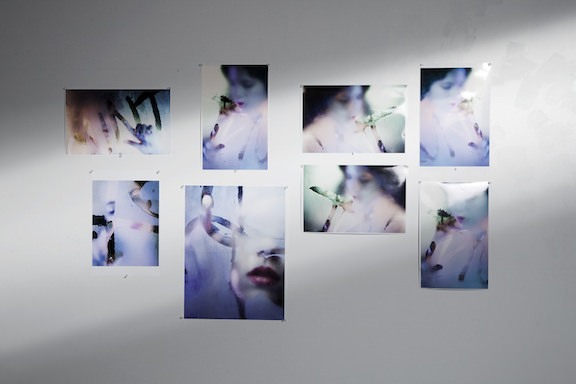
In studio with Marilyn Minter.
Photo by Steven Benisty.
MARILYN MINTER: I got virtually all my birth control and reproductive health through Planned Parenthood. You know, they haven’t been under attack for the last twenty years like they have in the past two. All of a sudden, there’s this new onslaught. My generation really remembers illegal abortions. I knew people that had to go to the nurse in Jacksonville for unsafe, illegal abortions. One of my friends, a very famous artist, went by herself to Mexico. What do they think, that women aren’t going to get abortions? It’s never going to happen. It’s just going to be illegal and unsafe—it’s punishing women.
WW: Tell us about your recent efforts for the organization and why you were honored at the luncheon.
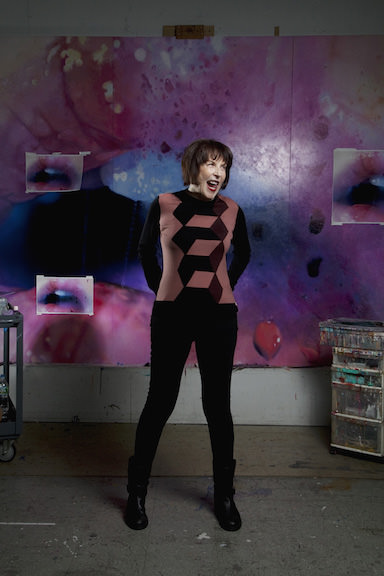
In studio with Marilyn Minter.
Photo by Steven Benisty.
MM: Well, I’m working on a retrospective and a one-person show all about the same time, but I felt like I had to do something. I’ve always been an activist and I’ve always been just another marcher, but I did a project for Kiehl’s, which started off lovely. The president, Chris Salgardo, is a real activist. He asked if I would design images for the new store on Mulberry Street, and I created a tote bag, too. I did the project, we opened the store, and we really started getting press. He said he didn’t pay anyone, and that they didn’t advertise, but they donated to the artist’s favorite charity. So I said I’d donate to Planned Parenthood, and it took a while to get that okayed.
Then, we met with Planned Parenthood, and we planned an auction—“Choice Works.” I asked Cindy [Sherman] and Laurie [Simmons] to join me and we asked other artists. We also talked to Amy Cappellazzo, now at Sotheby’s, who said, “Target the boys who make the most money.” And we did.
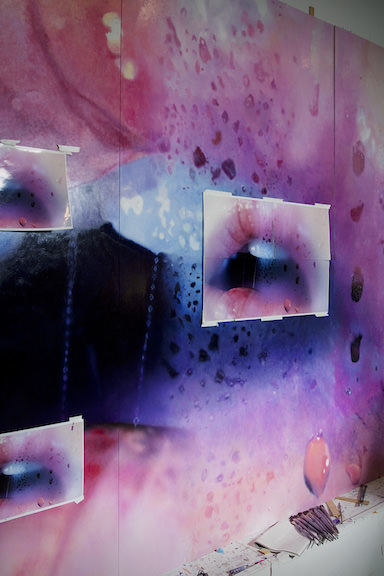
In studio with Marilyn Minter.
Photo by Steven Benisty.
Of course, the first person that said yes was Cecily Brown, whom I adore for this. She gave a $350,000 painting—and so did Richard Prince! Christopher Wool and Charline von Heyl gave pieces too. The women gave really substantial things, which I expected, like $70,000 to $80,000 pieces. And then we had Richard Serra donate a $200,000 piece, and some others, too. They gave very substantial pieces; they didn’t give the usual for an auction. They were making a statement. Some people who didn’t want to be at the auction just gave pure cash. Really making a statement. Artists are fearless.
That’s why I wanted Miley, because she’s a youth activist. And we sold the T-shirts out in a week. That’s another $100,000 for Planned Parenthood. And Marc Jacobs did it for cost! No one else would even touch this project. That’s what I keep thinking Planned Parenthood needs—more celebrity, institutional, and corporate support. We’ve got to take our cues from the marriage-equality movement.
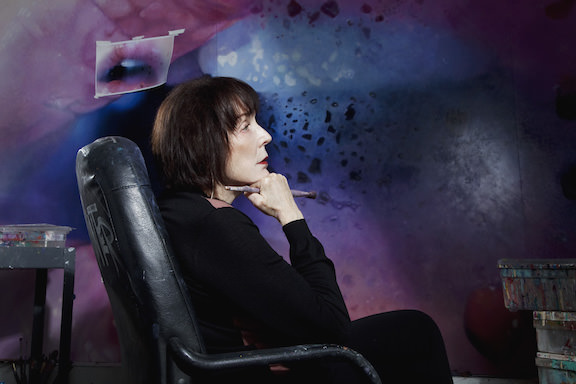
In studio with Marilyn Minter.
Photo by Steven Benisty.
So that was where I could give back—we raised almost $3 million.
WW: You explore the messages behind corrupted images of power, glamour, and beauty in all your work. When did that begin?
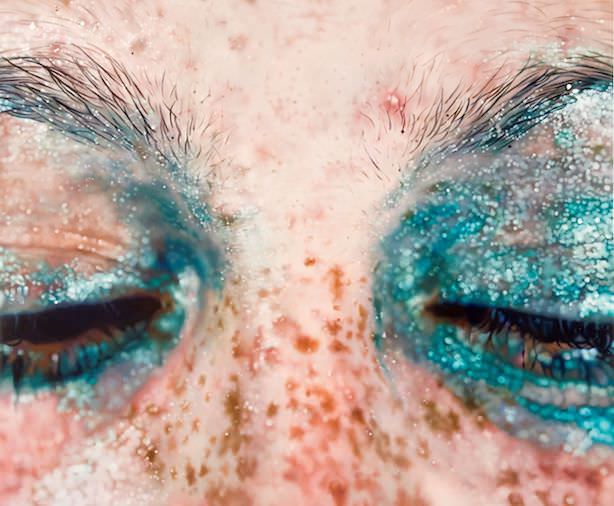
Marilyn Minter (American, b. 1948).
Blue Poles, 2007.
Enamel on metal, 60 x 72 in. (152.4 x 182.9 cm).
Private collection, Switzerland.
Courtesy of the Brooklyn Museum.
MM: I think I’ve always been really intrigued by imagery from popular culture that’s dismissed as shallow, unproductive, superficial, or not important, like fashion, glamour, and pornography. I believe that all of them are engines of culture and that we’re missing a big point. For instance, there would be no Internet without pornography.
It started the minute I saw anything people dismissed. I’ve always been the person that’s pointed something out and said, “There’s something wrong with this picture. How come you don’t examine that?” I had these questions all the time about everything. I like things that are considered contemptible. I’m interested in things that are considered dismissive or shallow. For me, artists that are interesting are the ones that make pictures of the lives we live.
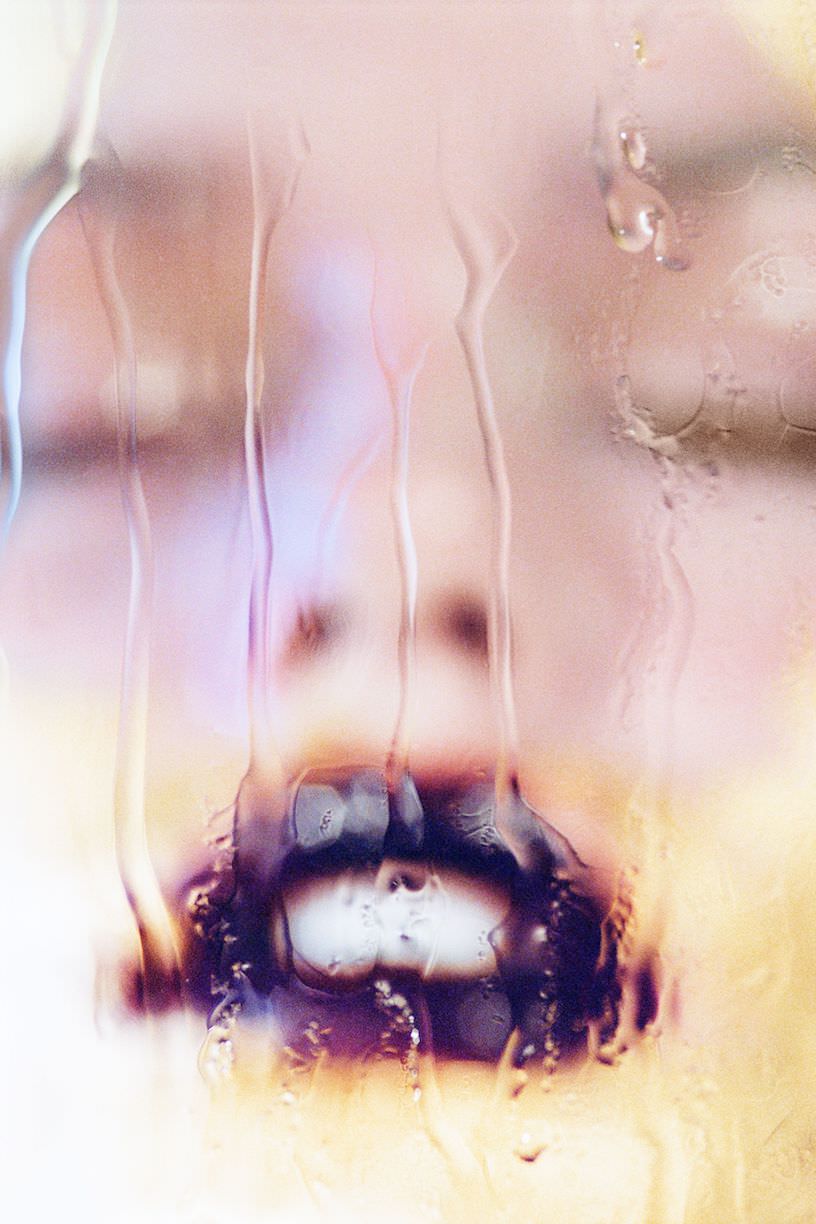
Marilyn Minter (American, b. 1948).
Black Orchid, 2012.
C-print, 86 x 57 in. (218.4 x 144.8 cm).
Courtesy of the artist, Salon 94, New York, and Regen Projects, Los Angeles.
Courtesy of the Brooklyn Museum.
In 1989 when I did a hardcore porn series, I tried to reclaim sexual imagery from an abusive history. Why shouldn’t women have images for their own pleasure? I was youngish when I did that, and during that time, these types of images just weren’t done by women. I was trying to make a case of “Does it change the meaning?” Long story short, it started with seeing a Mike Kelley show in 1989 at Metro where he did these great stuffed-animal sculptures and paintings. I thought to myself that if a woman artist made this exact same work she wouldn’t get any attention. He was so intellectual and he made a great case. I thought it through and asked myself, “What is the subject matter that women never touch? Would it change the meaning of mall culture, and girls, and unicorns, and felt banners, and 13-year-old adolescent thinking?” I mean, Kelley did it—he changed meaning.
I don’t believe anyone has politically correct fantasies. I believe women should make images for their own specific pleasure, no matter what the porn industry thinks. We deserve that. But my downfall was that it was in the middle of political correctness, and I didn’t understand that because I had no choice—I just had to make those images. But the timing was so off, and the Internet wasn’t there. So images like that shocked people. I was considered a traitor to feminists. But hey, my side won . . . almost 30 years later! [Laughs] Now no one bats an eye. No one says, “Oh, don’t put those in the museum show. We’ve got to hide this.” I’m now always linked to sexuality. If I paint a glass of water, it’s considered sexual.
WW: Tell us a bit about your abstract work—ignoring the big picture and focusing on what’s right in front of you.
MM: I find that I’m not interested in telling you what to think, so I’m trying to get rid of the narrative. That means I work metaphorically. I’m not interested in making another pretty face. What is the special relationship between this mist of frozen glass, and this tongue touching the surface? That’s something we’ve all seen, but it’s fascinating to me that no one’s ever made an image of it. It’s propelling me to re-create it. I don’t intellectualize at all; I just get this idea, and then I’m a pit bull. I won’t let go until I make it.
WW: What’s most fascinating about sexuality to you?
MM: Everything. It’s another thing that we dismiss as just part of who we are. It’s almost the ruling trait of humans. Power is all about sex. It’s riveting. And we don’t explore it more, in any kind of scientific way, but we do constantly examine it. And fluid sexuality is totally loaded. The minute you try and define it, it’ll spit in your face. I just accept.
WW: Tell us a bit about what is included in “Pretty/Dirty” at the Brooklyn Museum.
MM: The Brooklyn Museum is telling the story of my vision from my earliest work. I have drawings that I made when I was nine years old to the last piece, which was made in 2015. I think it’s a really concise survey and you can see the same threads that have been in my work from the very beginning.
WW: What was the most important thing for you to convey to the audience through this large body of work?
MM: I think it’s important to me to not make any didactic statements. And I think that’s how life is. It’s constantly paradoxical and constantly contradictory. I see the world that way. That’s always been my vision. Not to spell anything out for anybody. Come to your own conclusions. Bring your own history or your own traditions. And that’s pretty much in everything I’ve done, and I get criticized because I’m not kicking the fashion world in the face. I see it as a huge influence on the culture, and I also see how it gives the norm of pleasure to people, while at the same time, it creates body dysmorphia. That’s just how it is. It’s a reality check. And it’s the one place women have power. At the same time, everyone knows that no one ever even looks that good.
And I’m always concerned with paradox and having two ideas in the same image or multiple reads of everything—in the paintings, the video, the photography. I’ve always just seen things a little bit off. I don’t see things as black-and-white. I’m interested in the gray area of everything because the gray areas are where we all live. The entire culture is asking you all the time to be black-and-white, but nothing is. There’s constant pressure to decide to be so.
WW: Tell us about what you showed at Salon 94 and your message behind pubic hair.
MM: It took about two years to make and it was primarily a steam and frost show. They were very radically different than everything that’s in the Brooklyn Museum—those were in glass with a lot of condensation with rain or graffiti. At Salon 94, the glass has frost and steam. Lots of shower scenes. I was also making a case for beautiful pubic hair. I tried to make them so beautiful to where anyone could put them in their living room. And I was trying to make a case that young girls shouldn’t laser. Do anything you want, but laser is forever. You know, you may not want to be a baldy when you’re 50. Everything changes! Entertain the idea of following the fashion, but don’t do something that’s forever. But I love those paintings. And it was steamy in the gallery because it was raining, so the opening was perfect.
WW: Can you talk about your recent activism work, like the Women’s March on Washington?
MM: The Women’s March on Washington felt great. Solidarity. I love doing activism work because it makes me not feel powerless. I think the two days after the election were very painful, and with all the stages of grief. Anger is next, and that’s what’s coming up now. We’re never going to have acceptance. He is not my president. And, you know, he’s just so much worse than I ever thought he was going to be. I don’t see how he can be any worse. Everything out of his mouth is a lie. It’s disrespectful for humanity. The movie of this is going to be horrifying. Democracy is at stake here.
WW: And what about the “Dear Ivanka” movement you were a part of with Halt Action Group?
MM: She’s moving to Washington, so we wanted to make sure she remembered to bring human rights and rule of law and safe abortions with her. And so we made these boxes so she wouldn’t forget them. We’re absurdists, you know. It’s a huge group—full of plenty of men and women advertisers, psychoanalysts, curators, editors, writers, artists, gallery dealers. It’s art-world-centered, but it’s all kinds of people. I’m just one of the hundreds. We’re trying to be rash and nasty. Constant irritation. I’m also in this group called Swing Left, and I think it’s the best and most effective, and it’s to help change the makeup of the Congress and the Senate as much as we can by 2018.
The bottom line is that the most qualified candidate lost to the most unqualified candidate, so we have to spring into action.
You know, I’ve been distracted by activism, but it’s also been feeding my work, so it’s all good. The only reason I’m not paralyzed is because I’m doing activism . . . otherwise I would be.
WW: What is the most effective thing that people can do to help Planned Parenthood?
MM: Money. Donate. And call your local Planned Parenthood and ask them what you can do to help, because they have a million things you can do, from clinical defense to teaching. There were 200 people outside of the store in front of Bleecker Street a day ago. It’s being able to police women’s bodies. It’s about the patriarchy. And you know, feminism is rational. Everybody is better off.
This interview was published in the spring 2017 issue of Whitewall, out now.


